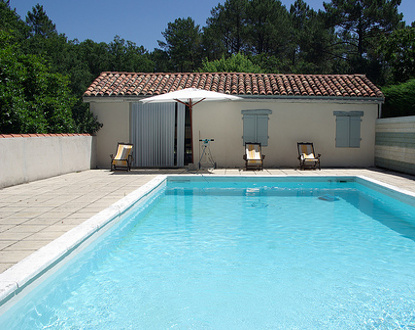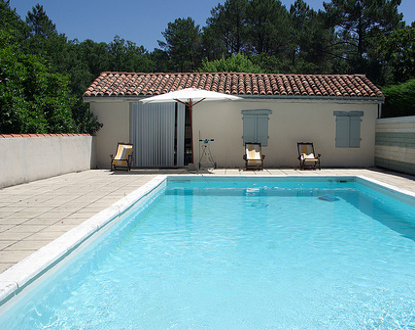Summer is approaching, bringing with it outdoor activities. Some of you will enjoy the pleasure of diving into your pool. Sadly, every year many children drown in private pools. Nice-Premium summarizes the main safety measures for you.

The 2004 legislation stipulates that a standardized safety device must be equipped on any buried or semi-buried private pool intended for individual or collective use. This includes family pools, hotel pools, bed and breakfast pools, campsite pools, holiday club pools, and those reserved for residents. This regulation is governed by law n° 2003-9 of January 3, 2003, and by decrees n° 2003-1389 of December 31, 2003, and n° 2004-499 of June 7, 2004.
There are four devices provided by decree n°2004-499: safety barriers, alarms, enclosures, and safety covers.
There are four AFNOR-approved standards: standard NF P90-306 for barriers, standard NF P 90-308 for covers, standard NF P90-309 for enclosures, and standard NF P90-307. These products must display the standard marking, the manufacturer’s name, and the year of manufacture.
Barriers
They must prevent children under 5 years old from accessing without adult help. They must withstand the actions of a child under 5 through a lock system. Finally, they should not cause injury. The barriers are situated at least one meter from the pool, measure at least 1.10 meters between two support points, and are equipped with a gate, preferably self-closing. Despite aesthetic issues that manufacturers try to address, barriers are recommended by the Consumer Safety Commission for child safety.
Safety Covers
They must prevent the unintentional immersion of children under 5, withstand an adult crossing (a person of 100kg must be able to walk over it several times) and should not cause injury. The covers hold significant weights and withstand strong pressures (like falls) but are cumbersome once removed and take some time to put on or take off. Once in place, they must cover the entire pool surface.
Automatic covers, such as shutters, are very practical: they are easy and quick to set up but this solution is expensive.
Note that bubble covers are not compliant devices in the majority of cases.
Enclosures
When closed, enclosures (or conservatories) must make the pool inaccessible to a child under 5 and must not cause injury. They provide good security if they can be closed and fit well to the ground but are expensive and complex to set up.
Alarms
They do not prevent drowning. To meet standards, activation and deactivation controls must not be accessible to children under five. Detection systems must detect any crossing by a child under five and trigger an alert with an alarm. However, they must not cause false alarms.
Two types of alarms are approved: submerged alarms and perimeter alarms. The sound signal must be at least 100 dba. It is recommended to add complementary devices to these alarms. There are bracelets and necklaces that trigger when the child falls into or approaches the pool.
Some submerged alarms on the market are no longer compliant: this is the case with DET 10 by Aqualarm, Poolguard by Energy Engineering, Alpool JB 2005 by Alpotec, Aquasensor Premium by MG International, and Securipool by Securipool International.
The primary advantage of alarms is their price.
Installation, Compliance
The implementation of the device must be done before filling the pool with water or at the latest by the end of pool construction if it requires a prior water fill.
It is up to the device manufacturer to guarantee that their product meets one of the standards. The buyer must be able to obtain this proof from the seller or installer.
The builder or installer must provide a user manual, an installation manual, maintenance, and safety advice. On each document, identify the name and reference of the model, the contact details of the manufacturer, importer, or distributor, and a customer information phone number.
Non-compliance results in a fine of 45,000€.
Prevention
Regardless of the chosen safety device, the essential rule remains vigilance and constant supervision of children. It is necessary to know that a child can drown in 3 minutes in 20 cm of water without making noise. A few tips are also in order.
Make sure to equip young children around the pool and during swimming with an appropriate buoy, armbands, or a float swimsuit (standard CE NF 13138-1). Teach them to swim from the age of 4. Consider placing a pole, a buoy, and a phone with emergency numbers near the pool. Above all, never leave objects (toys, inflatable objects) in the pool after swimming. Avoid slippery floors that lead to falls. Finally, don’t forget to reactivate the device!



